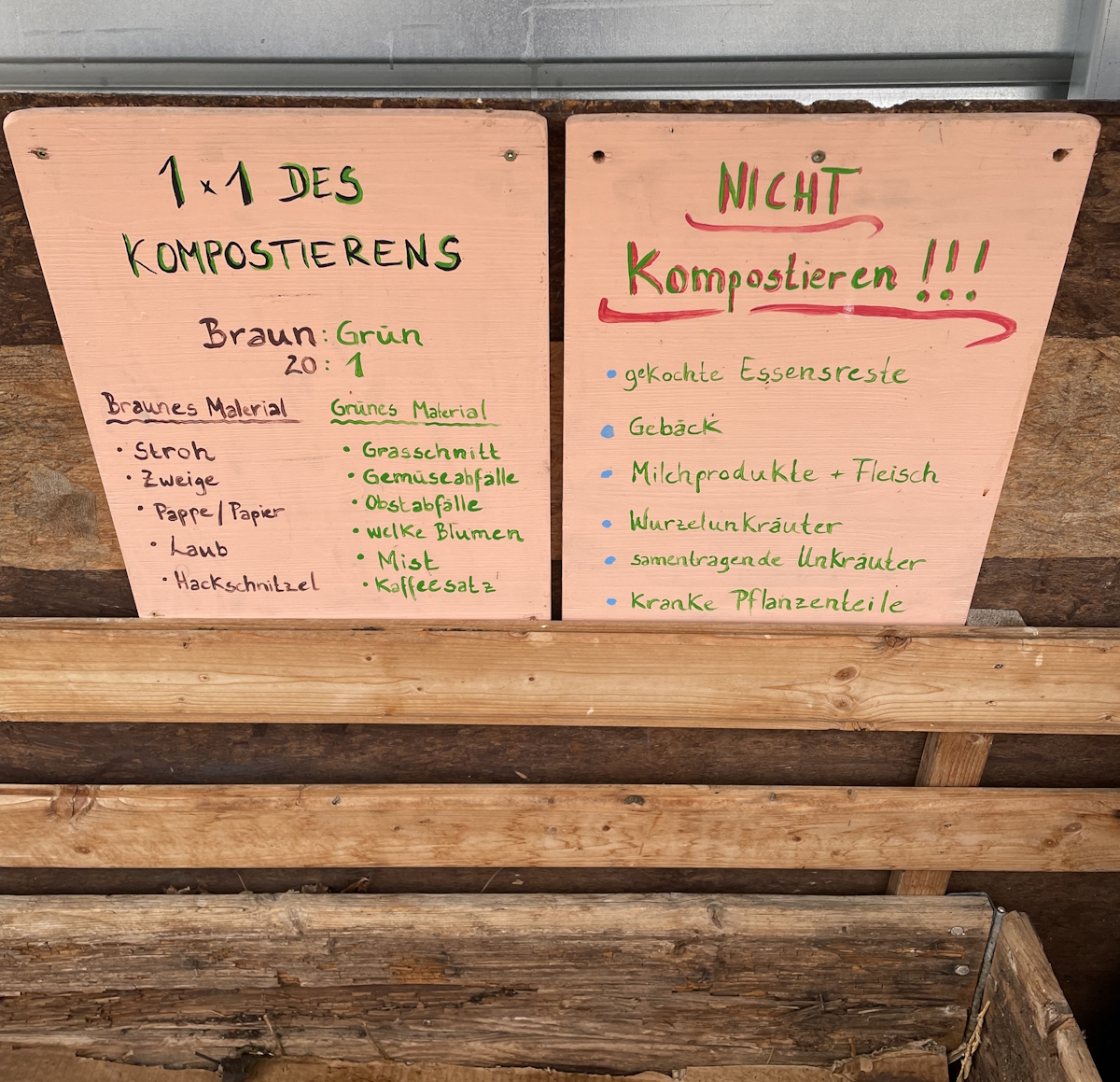Correct composting
Personal
Andere
How do you actually compost properly? What belongs in the compost and what doesn't?
A visit to our #jetztklimachen special award winner Inselgrün helped us to find out. We have photographed all the important information for you (see below).
If you want to find out more, the Federal Environment Agency has more information here: https://www.umweltbundesamt.de/umwelttipps-fuer-den-alltag/garten-freizeit/kompost-eigenkompostierung#ob-im-garten-oder-auf-dem-balkon-so-kompostieren-sie-richtig
It says: "The art of composting is to create favorable conditions for the microorganisms. To achieve this, the compost should be well aerated and moist (but not wet) and have as large a surface area as possible. The simplest basic rule for this is to mix the compost with as many different compost materials as possible. This can be achieved by using different "material layers". For rapid composters, it is advisable to keep dry garden waste such as small branches, bark mulch, wood flour or straw on hand. These can be added regularly.
